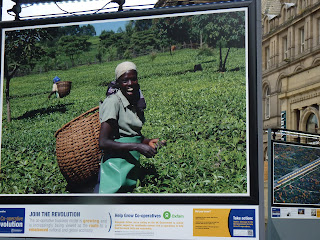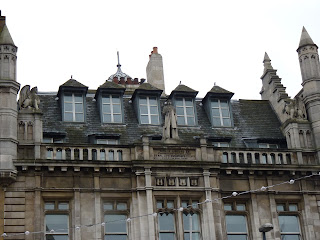In this photograph the dress has been made the greatest feature - the woman wearing it comes second fiddle; she's hidden completely by the hat and the light, she's in shadow. The dress had been carefully picked out buy the lights and movement. As the model has picked up her skirt, it has caught the light and every single pleat is visible.
The background seems to be a print on fabric or thin paper, it makes the photo seem more feminine and serene than without. The daffodils, although fake, are the same. Making the young woman come across as calm.
These photographs almost certainly use back projection. There are very few - and not as easy - ways to create this effect. I like the almost jokey postures of the men on the left-hand photo. They take away the dull, serious feel that would be there if it was just the woman in the picture. The second picture, with a woman striking an almost identical pose, looks more elegant, due to the ribbon and lace surrounding her, and making her, not just the feature, but also a little angelic.
http://loveisspeed.blogspot.co.uk/2012/02/life-with-high-society-photographs.html
http://kritinaknief.blogspot.co.uk/2012/03/cecil-beaton.html






















































